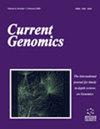赤柱藻生物活性分子代谢工程研究进展吉尔:一种传统的草药
IF 1.4
4区 生物学
Q4 BIOCHEMISTRY & MOLECULAR BIOLOGY
引用次数: 0
摘要
摘要:植物是各种药物开发过程中生物活性分子的重要来源。赤藓(Tetrastigma hemsleyanum)是一种因其广泛的治疗作用而为世界所熟知的濒危药用植物。从该植物中已鉴定出许多生物活性分子,包括黄酮类、酚类、萜类、类固醇、生物碱等多种次生代谢产物。由于其生长缓慢,通常需要3-5年才能达到商业药用材料的要求。此外,T. hemsleyanum含有少量的特定生物活性化合物,很难轻易分离。目前,科学家们正试图用不同的方法从药用植物中增加生物活性分子的产量,或者用化学方法合成它们。基因组工具有助于了解药用植物的基因组组织,并导致操纵负责各种生物合成途径的基因。代谢工程使得通过引入操纵的生物合成途径来获得高水平的理想生物活性分子来提高次生代谢物的生产成为可能。代谢工程是一种很有前途的方法,可以在短时间内提高次生代谢物的产量。在这篇综述中,我们重点介绍了各种生物技术方法的代谢工程范围,以提高T. hemsleyanum的次生代谢产物的生产用于制药应用。最后,综述了利用代谢工程技术增强赤霉病菌生物活性分子的研究进展。这可能会导致未来通过经济有效的生产生物活性分子来减少对T. hemsleyanum自然栖息地的破坏并保护它们。本文章由计算机程序翻译,如有差异,请以英文原文为准。
Insights into Metabolic Engineering of Bioactive Molecules in Tetrastigma Hemsleyanum Diels & Gilg: A Traditional Medicinal Herb
Abstract: Plants are a vital source of bioactive molecules for various drug development processes. Tetrastigma hemsleyanum is one of the endangered medicinal plant species well known to the world due to its wide range of therapeutic effects. Many bioactive molecules have been identified from this plant, including many classes of secondary metabolites such as flavonoids, phenols, terpenoids, steroids, alkaloids, etc. Due to its slow growth, it usually takes 3-5 years to meet commercial medicinal materials for this plant. Also, T. hemsleyanum contains low amounts of specific bioactive compounds, which are challenging to isolate easily. Currently, scientists are attempting to increase bioactive molecules' production from medicinal plants in different ways or to synthesize them chemically. The genomic tools helped to understand medicinal plants' genome organization and led to manipulating genes responsible for various biosynthesis pathways. Metabolic engineering has made it possible to enhance the production of secondary metabolites by introducing manipulated biosynthetic pathways to attain high levels of desirable bioactive molecules. Metabolic engineering is a promising approach for improving the production of secondary metabolites over a short time period. In this review, we have highlighted the scope of various biotechnological approaches for metabolic engineering to enhance the production of secondary metabolites for pharmaceutical applications in T. hemsleyanum. Also, we summarized the progress made in metabolic engineering for bioactive molecule enhancement in T. hemsleyanum. It may lead to reducing the destruction of the natural habitat of T. hemsleyanum and conserving them through the cost-effective production of bioactive molecules in the future.
求助全文
通过发布文献求助,成功后即可免费获取论文全文。
去求助
来源期刊

Current Genomics
生物-生化与分子生物学
CiteScore
5.20
自引率
0.00%
发文量
29
审稿时长
>0 weeks
期刊介绍:
Current Genomics is a peer-reviewed journal that provides essential reading about the latest and most important developments in genome science and related fields of research. Systems biology, systems modeling, machine learning, network inference, bioinformatics, computational biology, epigenetics, single cell genomics, extracellular vesicles, quantitative biology, and synthetic biology for the study of evolution, development, maintenance, aging and that of human health, human diseases, clinical genomics and precision medicine are topics of particular interest. The journal covers plant genomics. The journal will not consider articles dealing with breeding and livestock.
Current Genomics publishes three types of articles including:
i) Research papers from internationally-recognized experts reporting on new and original data generated at the genome scale level. Position papers dealing with new or challenging methodological approaches, whether experimental or mathematical, are greatly welcome in this section.
ii) Authoritative and comprehensive full-length or mini reviews from widely recognized experts, covering the latest developments in genome science and related fields of research such as systems biology, statistics and machine learning, quantitative biology, and precision medicine. Proposals for mini-hot topics (2-3 review papers) and full hot topics (6-8 review papers) guest edited by internationally-recognized experts are welcome in this section. Hot topic proposals should not contain original data and they should contain articles originating from at least 2 different countries.
iii) Opinion papers from internationally recognized experts addressing contemporary questions and issues in the field of genome science and systems biology and basic and clinical research practices.
 求助内容:
求助内容: 应助结果提醒方式:
应助结果提醒方式:


